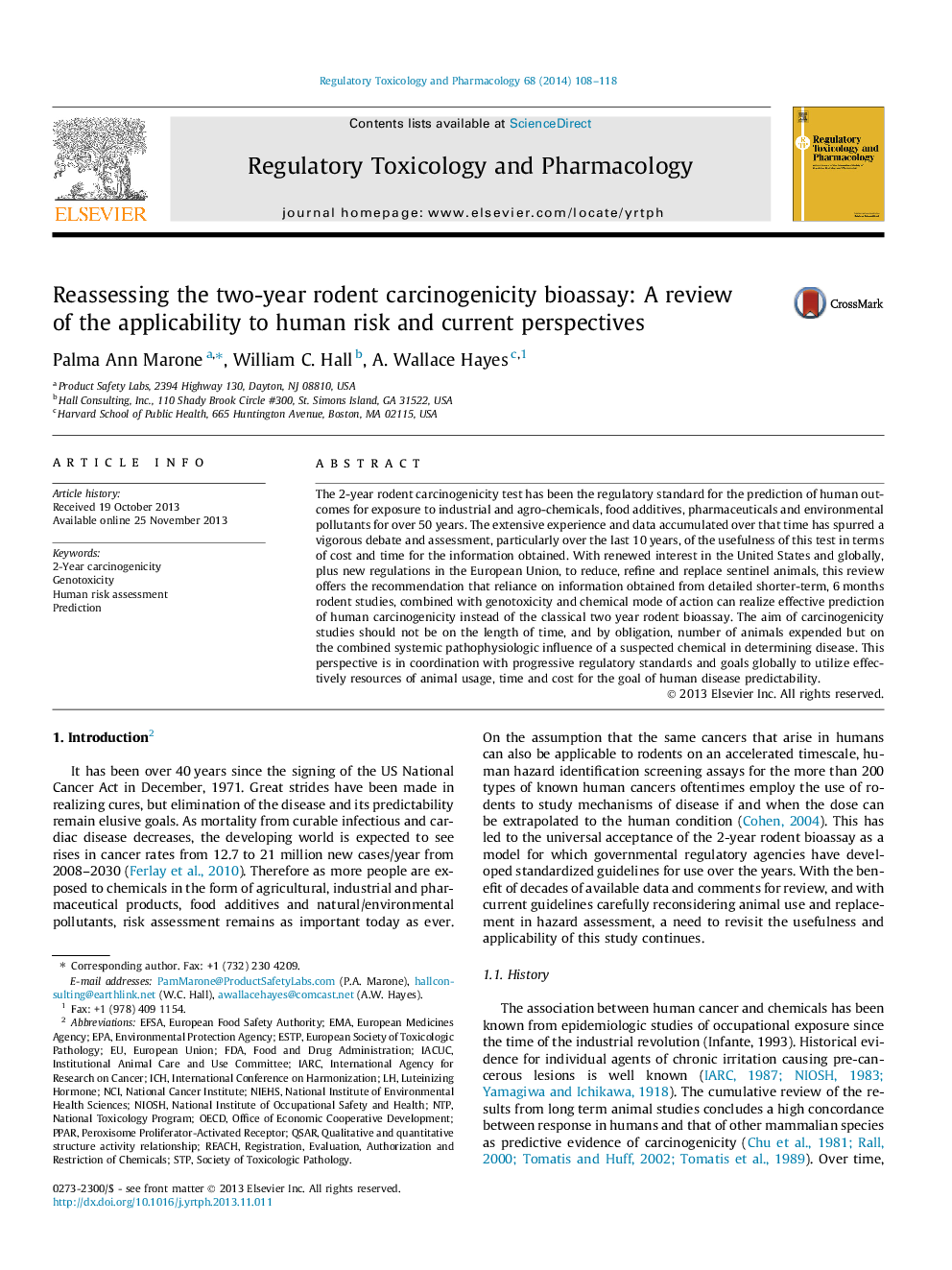| Article ID | Journal | Published Year | Pages | File Type |
|---|---|---|---|---|
| 5857365 | Regulatory Toxicology and Pharmacology | 2014 | 11 Pages |
Abstract
The 2-year rodent carcinogenicity test has been the regulatory standard for the prediction of human outcomes for exposure to industrial and agro-chemicals, food additives, pharmaceuticals and environmental pollutants for over 50Â years. The extensive experience and data accumulated over that time has spurred a vigorous debate and assessment, particularly over the last 10Â years, of the usefulness of this test in terms of cost and time for the information obtained. With renewed interest in the United States and globally, plus new regulations in the European Union, to reduce, refine and replace sentinel animals, this review offers the recommendation that reliance on information obtained from detailed shorter-term, 6Â months rodent studies, combined with genotoxicity and chemical mode of action can realize effective prediction of human carcinogenicity instead of the classical two year rodent bioassay. The aim of carcinogenicity studies should not be on the length of time, and by obligation, number of animals expended but on the combined systemic pathophysiologic influence of a suspected chemical in determining disease. This perspective is in coordination with progressive regulatory standards and goals globally to utilize effectively resources of animal usage, time and cost for the goal of human disease predictability.
Related Topics
Life Sciences
Environmental Science
Health, Toxicology and Mutagenesis
Authors
Palma Ann Marone, William C. Hall, A. Wallace Hayes,
